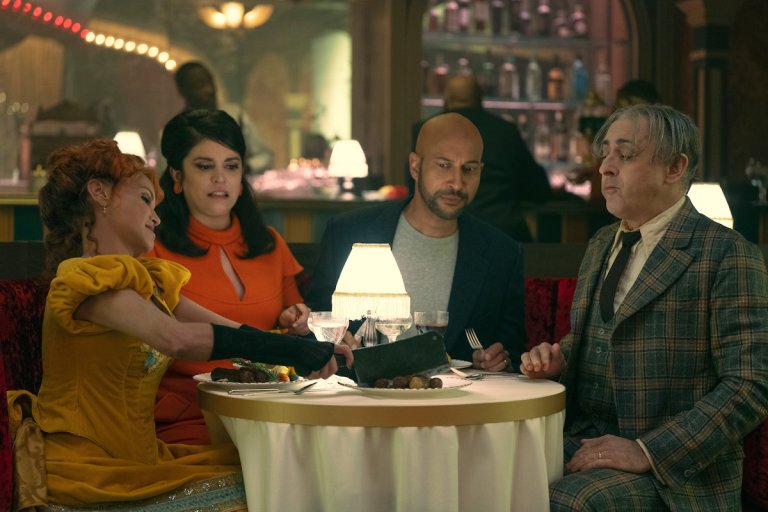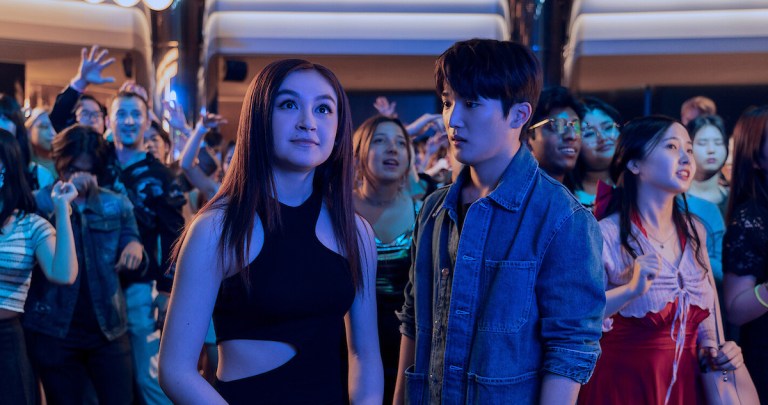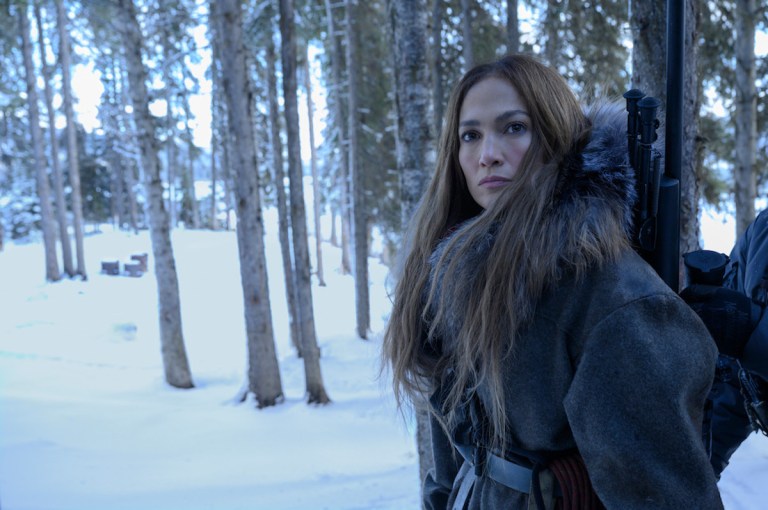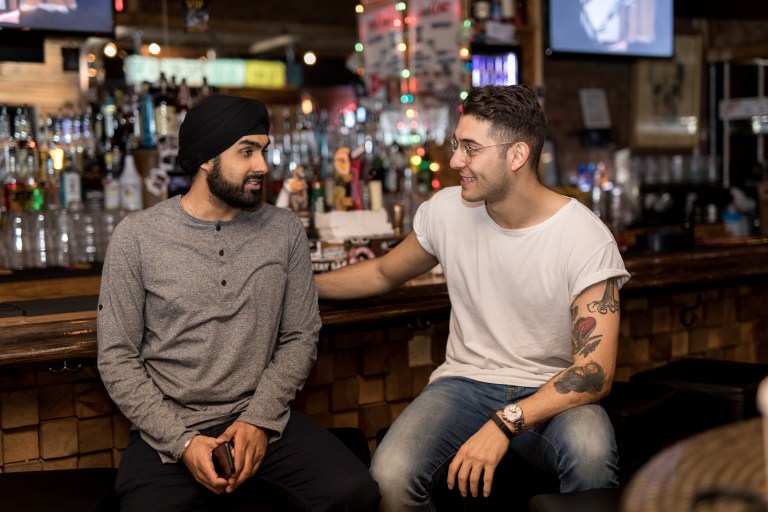I Am Finally Read To Learn Who I Am
My mind is as clear as I can get it. No images of who I want to be, just ready to learn who I am.
By ![]() Analee Benik
Analee Benik

“So, how many of these have you been on?”
My eyes drifted over to my phone on the seat beside me, willing the black screen to light up. I hated this question, and yet it started to seem like one I would be hearing quite often. Did it really matter how many other uncomfortable dating app dinners I had been to? Did he really care?
“Oh, you know, a handful.”
I was lying. This was my second. Eyes back to screen. No, look up, don’t be rude. Make eye contact, don’t be rude. Ask him a question, don’t be rude. “You?”
He shrugged and smiled. “Yeah.” Not an answer, but it was fine. It didn’t really matter. I didn’t really care. I was just going through the motions, doing what every podcast and family member and recently rekindled friendship told me to do.
Let me reframe: What I heard every podcast and family member and recently rekindled friendship telling me to do. I needed all the advice I could get. I was trying to get over a heartbreak.
Let me reframe again: I am trying to get over a heartbreak.
***
I think the best way to tell this story, the only way, really, is to start from the beginning. My beginning.
I was born with a need to be in control. I’m not sure where it came from — what combination of genes from Mom and Dad led to this variation of a human with a desire to control the world around her so strong that not being able to do so causes actual pain. Physical, mental, and emotional pain.
Oh, what I would give to be a Type B kind of person.
But I’m not, have never been, and never will be. And acceptance is key, isn’t it? At least, that’s what they say.
So, I moved through my early life with a throbbing in my head and tears in my eyes every time I was met with the realization that there were some things outside of my control.
“I just have an earache,” I would say, my hand cupped hard around my right ear, when someone would ask why I was starting to cry. Pressing against my head hard, it was my hope that I could push out the building pressure that made it difficult for me to think. The earaches were painful, but they were just an excuse, and I knew it even then. The earaches weren’t causing the tears. Both the earaches and the tears were caused by a situation gone wrong — me making a mistake or seeing an event play out differently in real life than it had in my head.
The first time that I was really able to wrap my head around this concept — my need for control: the reason for the pit in my stomach and the frustration in my ears — I was seven years old.
I can still hear the “Oh, oh God,” so clearly the way Mom said it that day on the phone. She was in the kitchen, my siblings and I at the table in the dining room. The hair on my arms immediately stood on end, my back stiffened. I could feel all the blood drain from my face as my eyes darted back and forth between my sisters and brother, afraid that they heard the same sadness in her tone that I did.
I don’t even remember what came next — how she sat us down and told us Great Grandma Myra had died. What I do remember is Dad walking out the back door without a word and heading straight into the woods that lined the back of our yard.
“Is he crying?” I asked Mom. It seemed like the worst thing I could imagine, Dad being so sad that he cried. I cried all the time — I was that sad all the time — but he couldn’t be. No one else could be.
It was a few days later and I was in the shower and I started crying over Great Grandma Myra again. And then I couldn’t stop crying, about Great Grandma Myra but also about everything. I wasn’t experiencing personal loss — I only remembered meeting her a handful of times. My screams and wails of despair were instead caused by my realization that the world wasn’t everything that I wanted it to be. People I loved were going to hurt. Even worse, people I loved were going to die.
My mom came in to check on me, still in the bathroom with a towel wrapped around my shaking body. She looked worried. “I need you to understand this,” she said gently. “There are things that we can control: ourselves, our words, our actions. But most things we have no control over. We can’t control everything. And we have to learn to be okay with that.”
***
At 26 years old, this is still a concept I struggle to fully accept.
Which is why I found myself screaming and wailing in despair again last October as my car tore up I-95, heading home from a work trip, on my way to end things with my loving and caring boyfriend of five years, for reasons neither of us fully understood.
But that isn’t the heartbreak I was working to get over in January while I sat on my second (and last) Hinge date. That isn’t the heartbreak I am still working to get over now, more than six months after that night. I was, and am, instead mourning the loss of who I expected to be by now. What I thought my life would look like. Where I was planning on being in my career and personal relationships. And why, despite a number of big changes in my living situation, friendships, and finances, I wasn’t able to live up to the picture of myself I had created anyways.
I heard a quote the other day that has been sprinting through my mind ever since. (All my thoughts seem to sprint.) It goes: If I asked you to name all of the things you love, how long would it take until you name yourself?
My answer? I wouldn’t have listed myself at all. Not because I dislike myself, but because I just wouldn’t have thought about it. I don’t think about myself a lot. Instead, I think about the “me” I have built in my head, the one where I have absolute control over who she is and what she has accomplished and how people respond to her. That is the me that I love the most, and I think about her all the time.
But that me isn’t me. And that is what I realized, without yet being able to verbalize it, at the end of last year when I decided to move back into my parents’ house for a few weeks and try being single for the first time in my adult life.
Yet, being honest with myself, I didn’t really try to be single. I wasn’t used to being lonely. So quickly the dating apps were downloaded, and once again, I started mentally constructing a new “me” — a woman who was able to rent an apartment by herself for the first time, change careers, find a new tight-knit group of female friends, and work out six times a week, all while going on fun dates with pretty cocktails most Friday nights.
For those few of you who may be familiar with story structure, that period of time was my ‘Act 2’. For those of you unfamiliar, I’ll try my best to articulate in a few sentences what many prominent authors spend entire writing craft books dissecting. In Act 1, the first third(ish) of a book, the story’s protagonist goes on living life as she always did — trying to reach some goal that she thinks will bring her happiness/fulfillment/etc. Yet, she has fears, misbeliefs, a skewed worldview, that prevents her from ever really finding internal gratification in the external things she is seeking. And then an event occurs, the catalyst, that forces the character to confront those things which she was avoiding, propelling the her internal change and the story’s plot forward. Yet, at this point, there is still so much book left. So, we first watch her struggle through Act 2, also known as fixing things the wrong way, before we can get to Act 3 where we really see her change in ways that allow for the resolutions she was looking for the whole time.
Disclaimer: that is a very simplistic (and probably mildly inaccurate) presentation of this form of story structure, and 100% does not count or fit for all of the beautiful stories and works of writing that grace our bookshelves. Yet it fits for me. And I’m tired of being in Act 2.
So what I am here to say, what I have been trying to say for close to 1,500 words so far, is that I want to change. It’s something I never thought I would want, because changing means giving up control over parts of myself — parts I might not even like but are there nonetheless. But I am dedicated to this new journey of trying to fix things the right way, a journey that started as soon as I got home from that Hinge date and thought, “Who am I?” A journey that probably won’t ever end. A journey that will allow me to become the best version of myself, and will hopefully lift others up to become the best versions of themselves along the way.
My mind is as clear as I can get it. No images of who I want to be, just ready to learn who I am.
Bring on Act 3.




